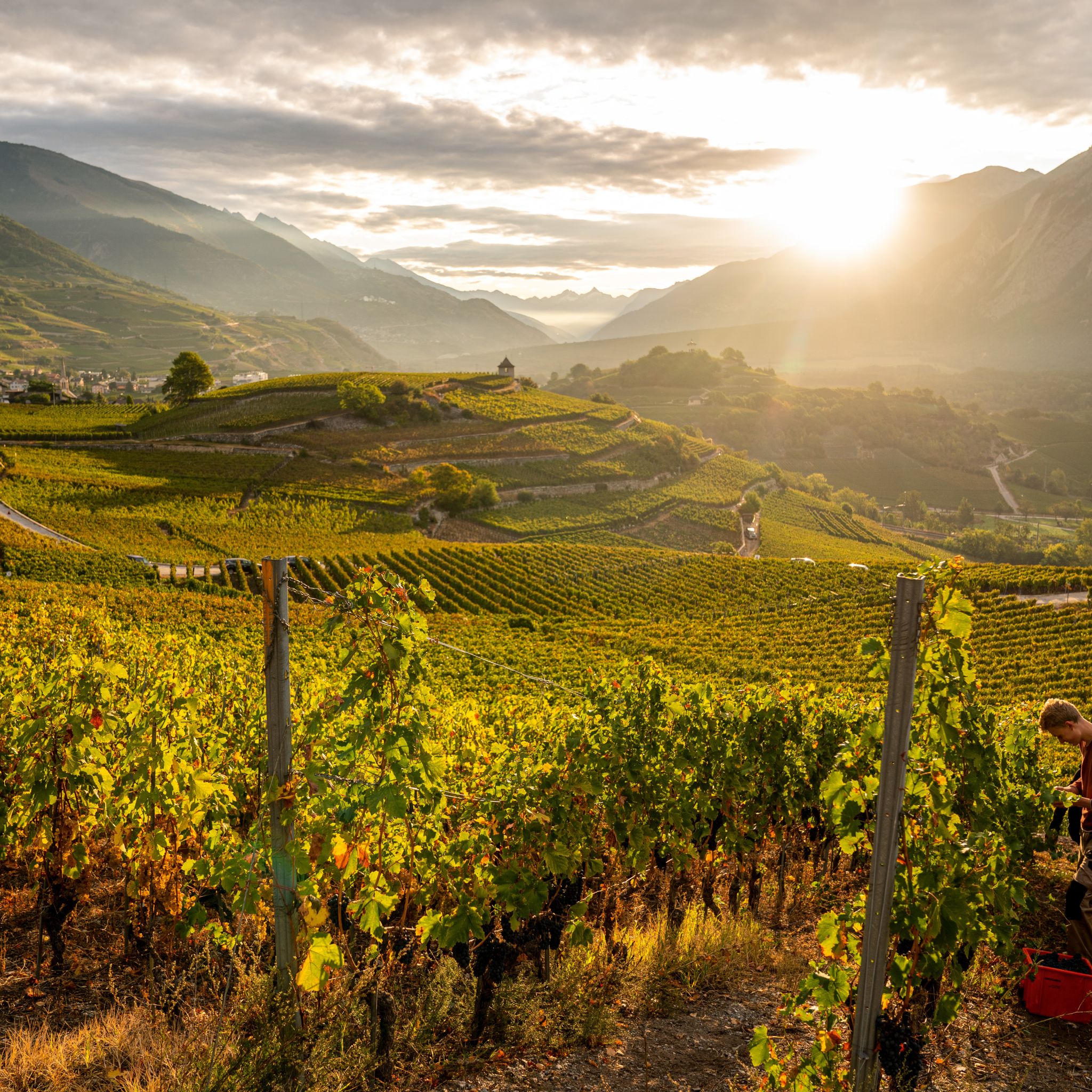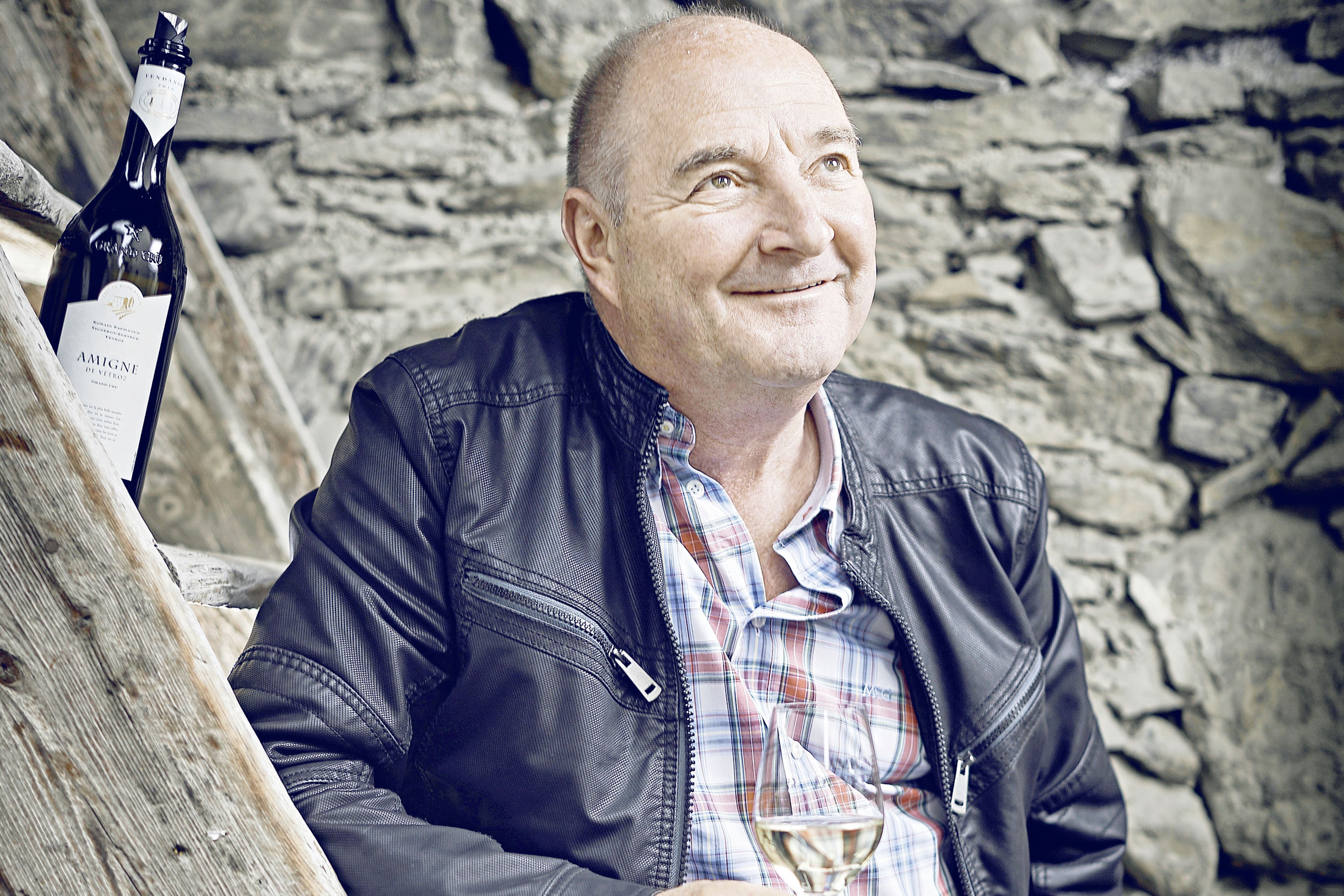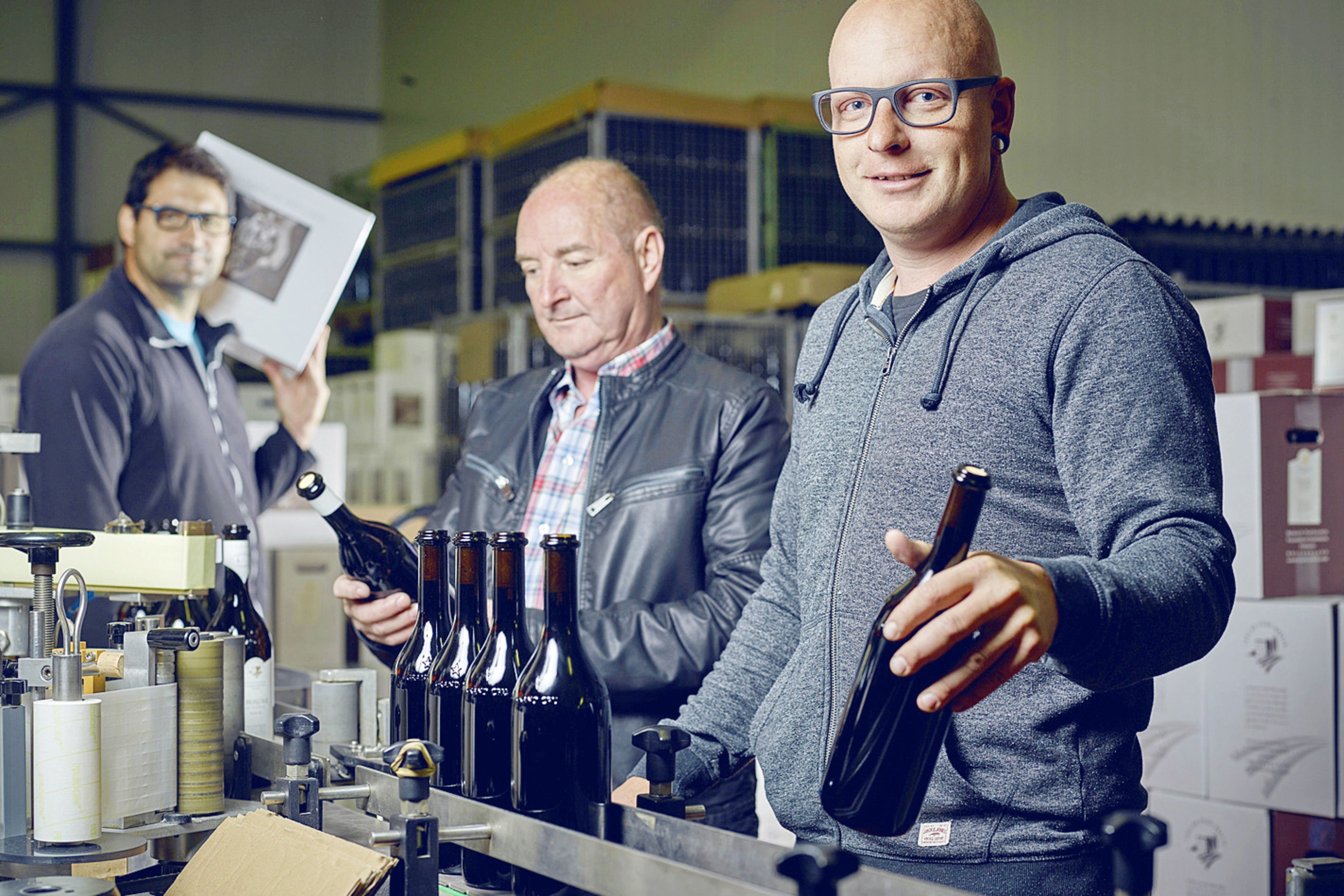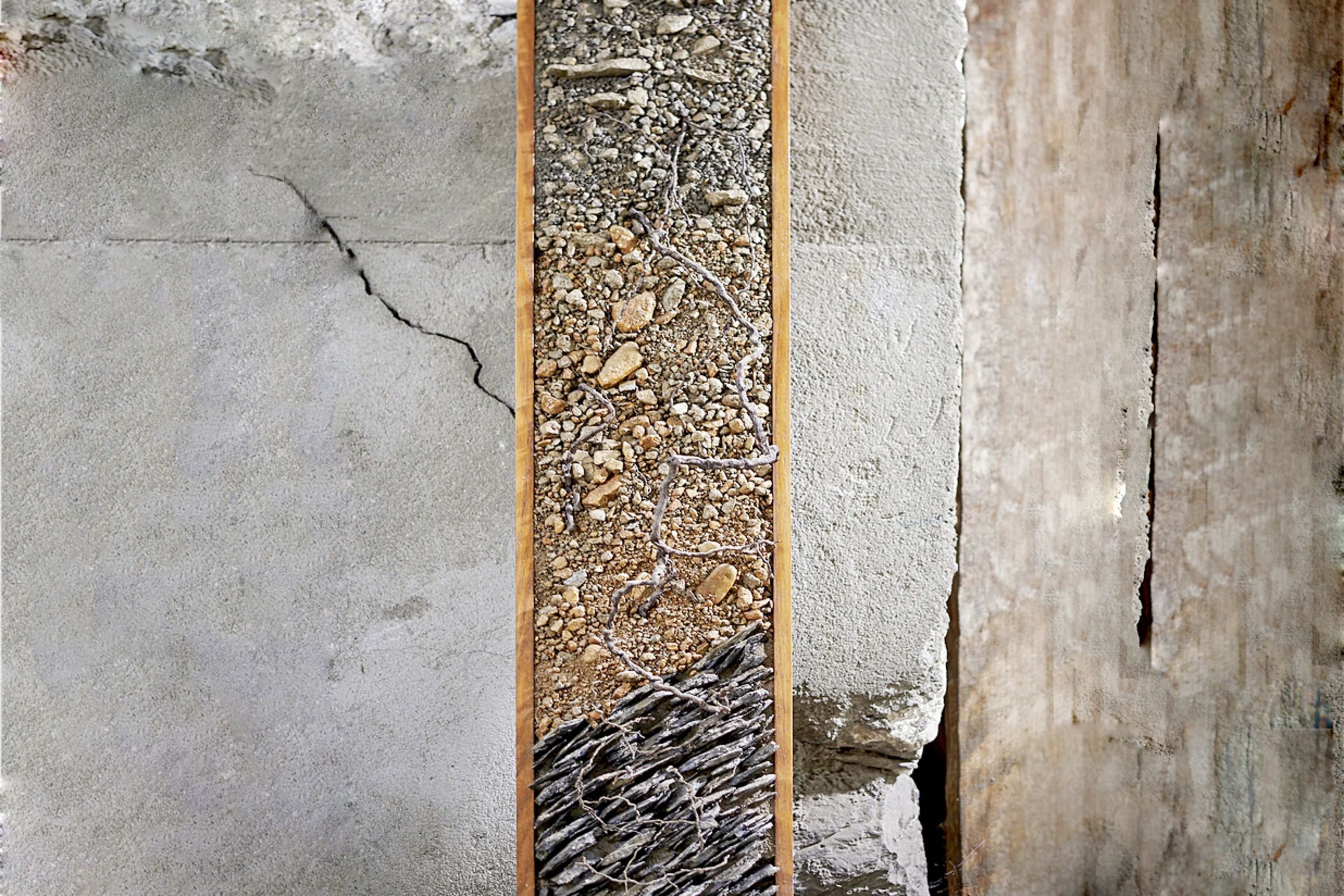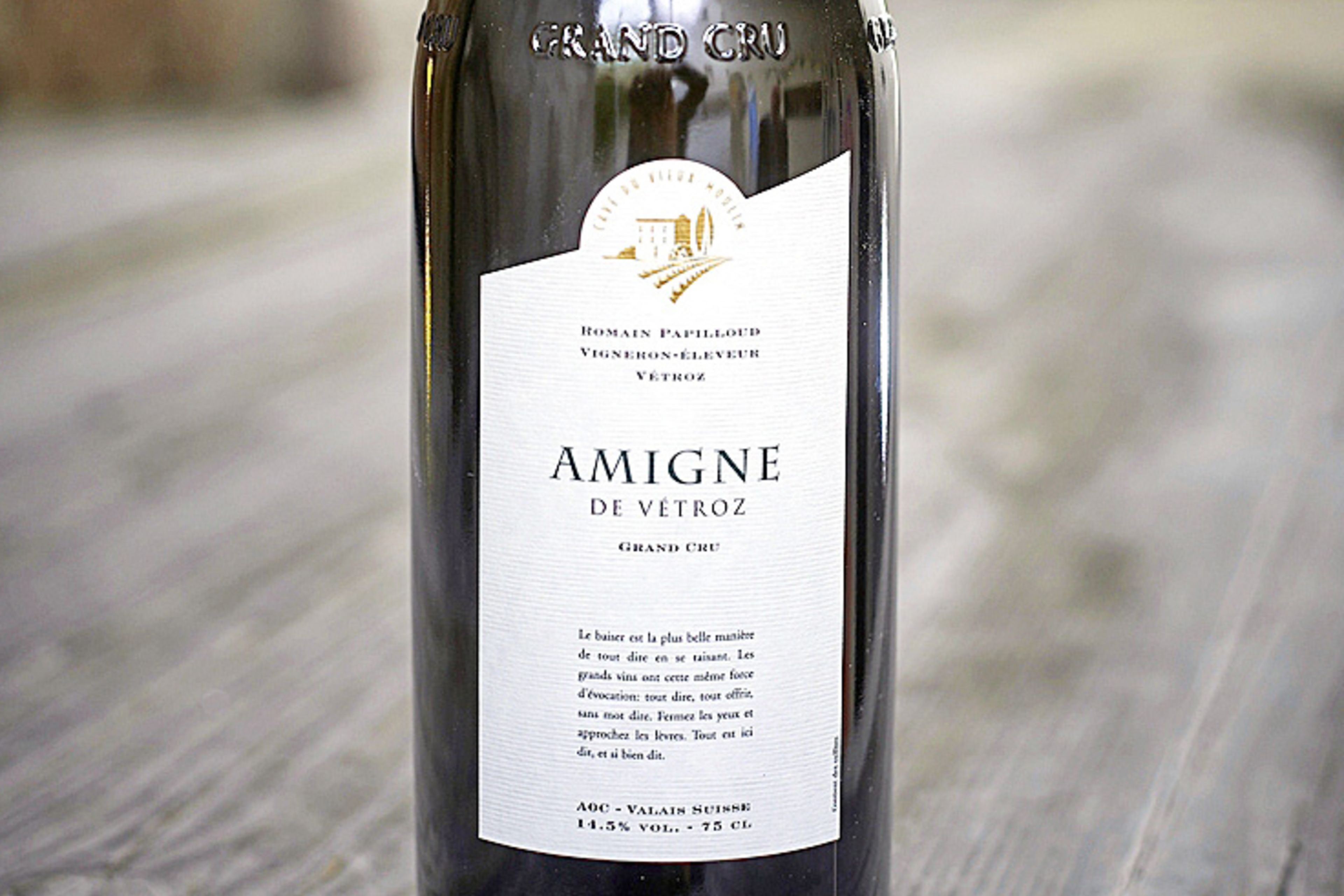A prestigious Valais wine
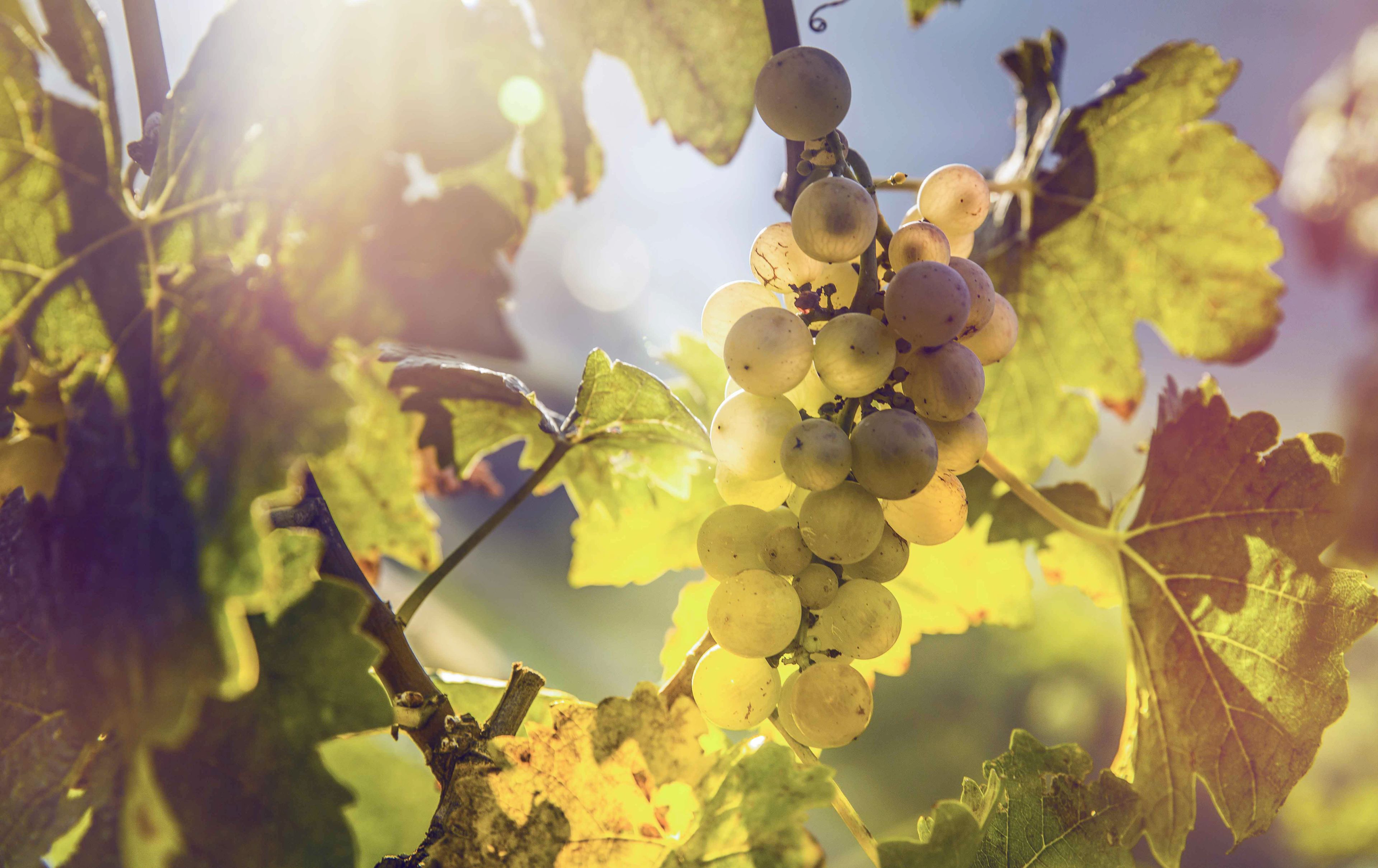
Amigne is a grape variety cultivated exclusively in Valais, mostly within the boundaries of the village of Vétroz, a few kilometres from Sion. Romain Papilloud is one of 18 winemakers who devote their talents to this rare variety. Once enjoyed as a sweet wine, Amigne is now increasingly made into a dry white.
The 2016 vintage has just been bottled. Romain Papilloud selects for his guests one of his special bottles labelled Grand Cru. “It’s the first I’ve opened,” he says. He fills the glasses, takes a sip and appears satisfied with the result. For Romain Papilloud, who represents the third generation of his family to make wine at the Cave du Vieux-Moulin, this happy revelation marks a positive turn in a day that started badly. The night before, a deep frost damaged the vines bearing Gamay and Pinot grapes. The winemaker wonders whether he will still manage to harvest a few bunches of grapes of these two varieties in the autumn. “Ah, nature…” he sighs, as he lifts his gaze to his vines, which stretch out in terraces above the village of Vétroz.
The Amigne vines seem to have suffered less. This native grape variety was neglected for many years, but Romain Papilloud has been cultivating it since the late 1980s. “Previously, my grandfather planted almost entirely Chasselas and Gamay,” he recalls. Little by little, however, Valais winemakers rediscovered native grape varieties. The days of mass production had passed, and local specialities were in ever greater demand. And that is how Vétroz became the village of Amigne, which now flourishes on 8% of its 180 hectares of vineyards. In his cellar, Romain Papilloud has a display that shows the different soil layers in proportion: a “terroir” in which the vine is very much at home. First comes sandy soil mixed with stones; then fine rock and schist. The roots of the vines extend deep into the lower layer, which gives the wine its distinctive character.
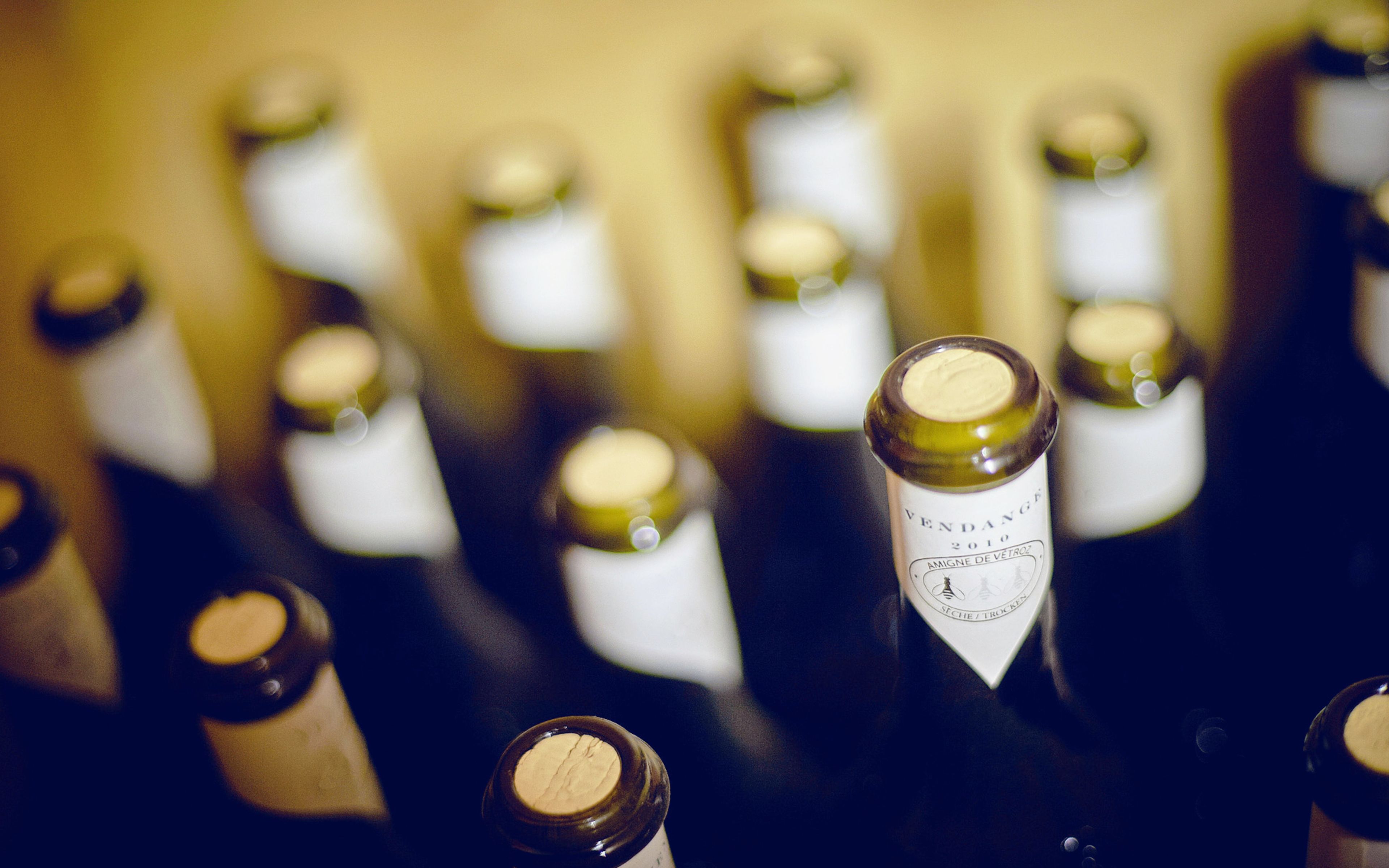
Amigne is an ancient grape variety, cultivated only in Valais. It was probably brought here by the ancient Romans, as various pieces of evidence suggest. The Latin author Columella mentioned the vitis aminea in his book De re rustica. The winemakers of Vétroz are therefore following a tradition that extends back two millennia. The first official mention of Amigne was at the viticultural exhibition of 1878 in Geneva. Today, worldwide cultivation of Amigne amounts to just 38 hectares – entirely in Valais and mostly in Vétroz (70%). Romain Papilloud reaches for a photo of a bunch of Amigne grapes, which seems bulky and weighty. He smiles and says: “It looks heavy, doesn’t it? But when you hold it in your hand, it’s lighter than you’d think, because the grapes are distinctly smaller than those of other varieties.” At flowering time, the Amigne is particularly delicate and requires a great deal of care throughout ripening. Harvest usually takes place three weeks after the Chasselas, and quantities produced are relatively small compared with other grape varieties.
And what do the three bees on the label signify? Romain Papilloud recalls that originally, winemakers produced primarily sweet Amignes; only in recent years have Amigne grapes been used to make dry whites. “The winemakers of Vétroz adopted a special classification system which helps guide consumers,” he says. One bee on the label means that the wine contains 0 to 8 grams of residual sugar per litre; two bees, 9 to 25 grams; and three bees, more than 25 grams. “Amigne has more body, it’s more powerful with greater acidity than other whites, but still inviting,” Romain Papilloud explains. The nose shows notes of apricot and mandarin. “It’s also one of the rare whites to have a tannic finish.” The wine is best enjoyed after cellaring for five to ten years.
How the wines of the future will be made.
Next story
